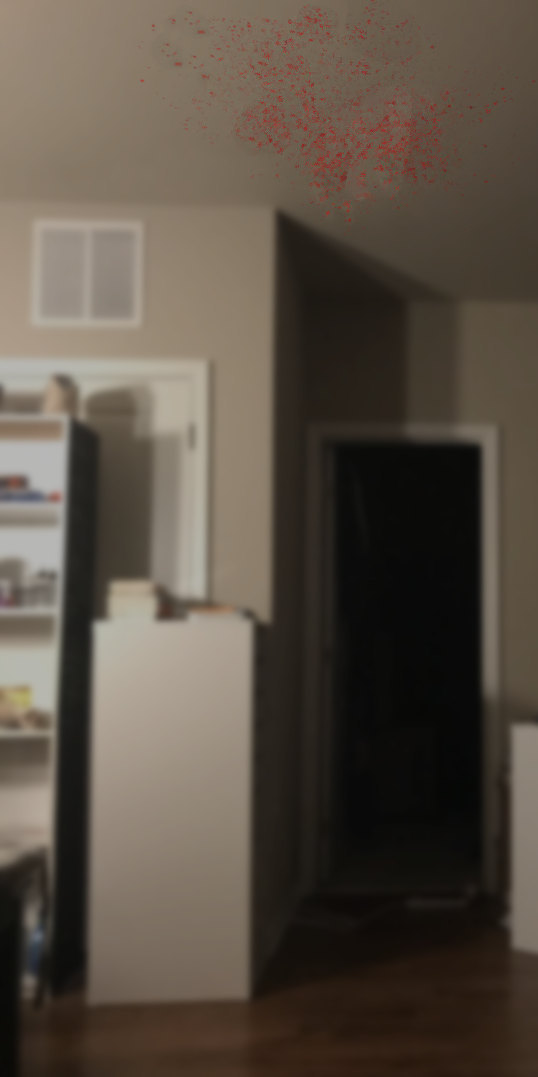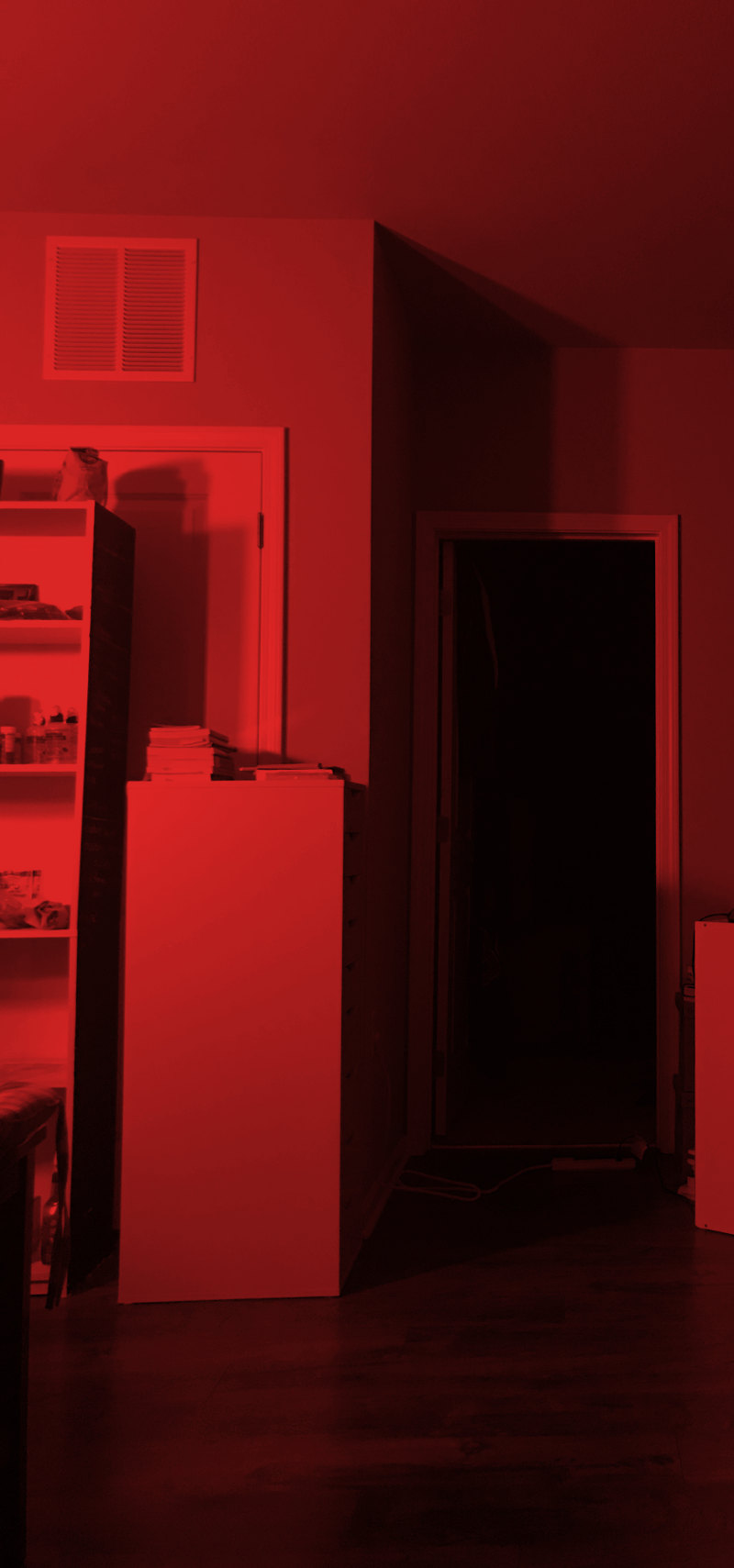As a brief note today, for the last year or so I’ve been experiencing various “visions” when I wake up at night. I mentioned them to a doctor recently, and he said, “No, you’re not crazy, they’re referred to as hypnagogic hallucinations.” I found out that more accurately, the ones I’m experiencing are known as hypnopompic hallucinations.
If you’re interested in what these look like, here are three that I experienced recently. I regularly see images of “splatter” on the ceiling, and they can be all sorts of color. Last night they were mostly black, but the night before that they were red and pink:

The strangest thing I’ve seen so far is large letters floating in a doorway. They looked like this, except the letters were also turned right, left, and upside down:

A third thing I see quite often is the entire room in a shade of color. Usually it’s a reddish/purple color, but it’s also been yellow and green:

For more details on this phenomena, these two pages have some good information:
- www.sciencedirect.com/topics/medicine-and-dentistry/hypnagogic-hallucination
- en.wikipedia.org/wiki/Hypnopompic
More details about hypnagogic/hypnopompic hallucinations
Before I go, here are some relevant quotes from those pages:
Hypnagogic hallucinations are vivid visual, auditory, tactile, or even kinetic perceptions ... are easy to distinguish from the hallucinations occurring in psychiatric disease because patients ... recognize the events as not real. Psychiatric hallucinations occur at any time of day, whereas hypnagogic hallucinations surround the sleep period.
Hypnopompic and hypnagogic hallucinations are frequently accompanied by sleep paralysis, which is a state wherein one is consciously aware of one’s surroundings but unable to move or speak. (I’ve experienced sleep paralysis since I was 16 or 17 years old.)
A unique characteristic of hypnopompic hallucinations is that as opposed to dreams, wherein we rarely understand we’re asleep, here sleepers do indeed have “the clear subjective awareness of being awake” yet are frequently mentally and physically trapped in the experience. (I’m not “trapped” at all, but I do find them fascinating. A little like LSD, without the LSD. And they certainly make getting up to go to the bathroom interesting.)
Sleep-related hallucinations (SRHs) include hypnagogic hallucinations (HGHs) at sleep onset, hypnopompic hallucinations (HPHs) on awakening from sleep, and complex nocturnal visual hallucinations (CNVHs). CNVHs are a variant of SRHs in which hallucinations occur after full awakening from sleep. (“full awakening from sleep” is an interesting phrase because I feel pretty darn awake when these are happening.)
Hypnagogic hallucinations (HHs) and hypnopompic hallucinations (HPHs) are visual (e.g., feeling someone or something present in the room; simple forms such as sparks, lines, flashes, confetti, and shadows; complex forms like waterfalls, cucumbers, animals, known or unknown people or faces, dwarfs, thieves, firemen, and lifelike scenes), auditory (e.g., footsteps, explosions, shots, voices, familiar or unfamiliar songs), tactile (e.g., someone grabbing the subject, bugs crawling on the skin, tingling, pain), olfactory (e.g., perfume, cologne, smoke), and kinetic (e.g., floating, flying, jumping, falling, out-of-body experiences, levitation). (How cool would a waterfall be?!)
Again, for more details on this phenomena, see those pages.



